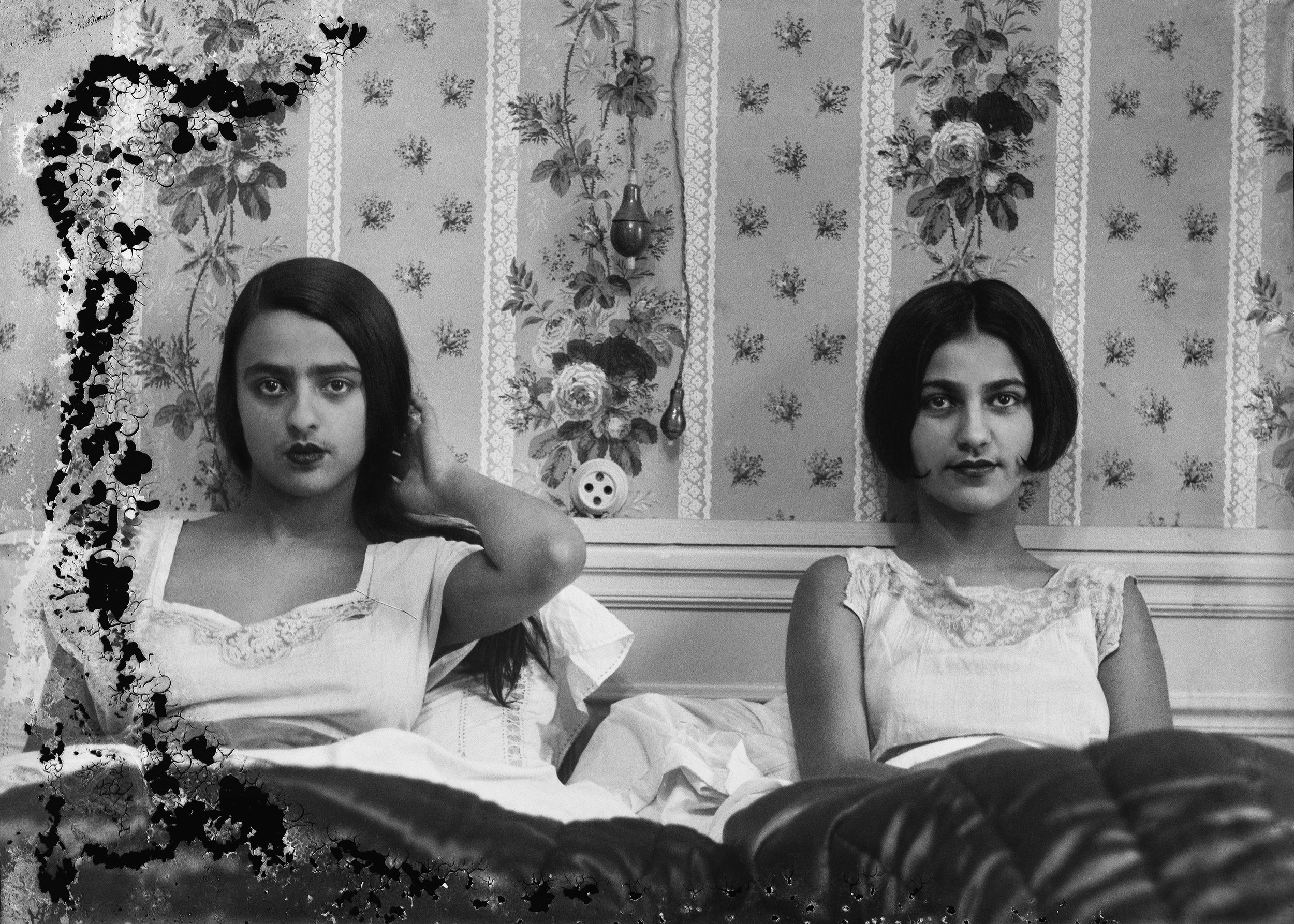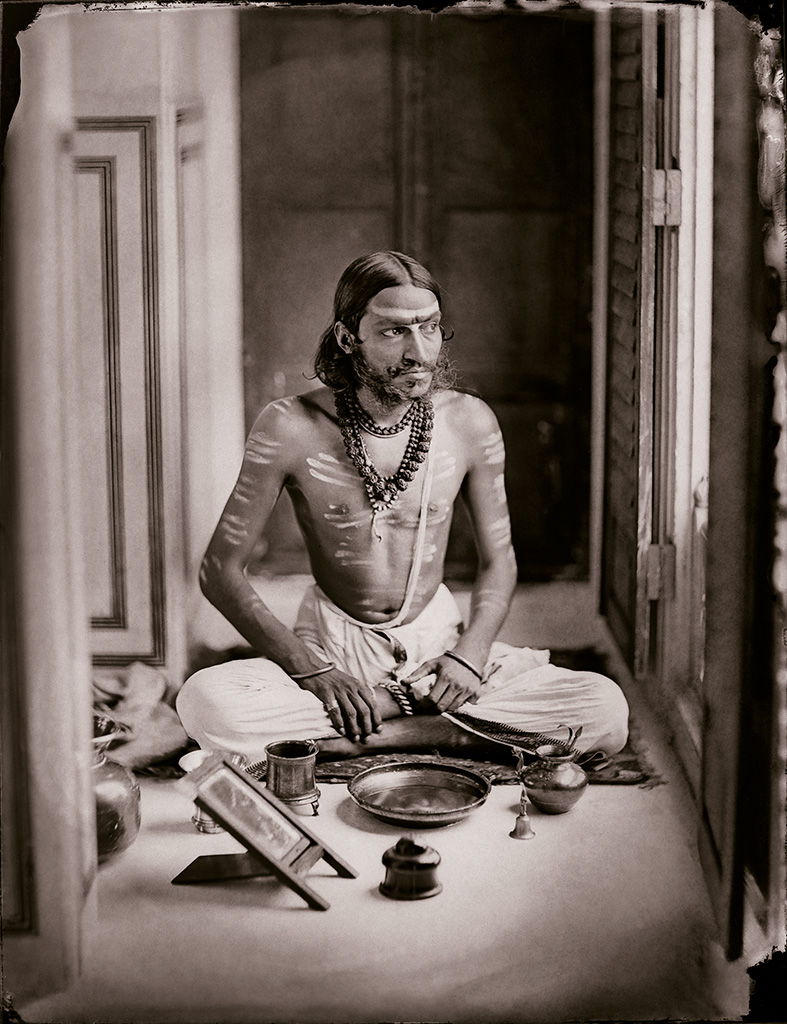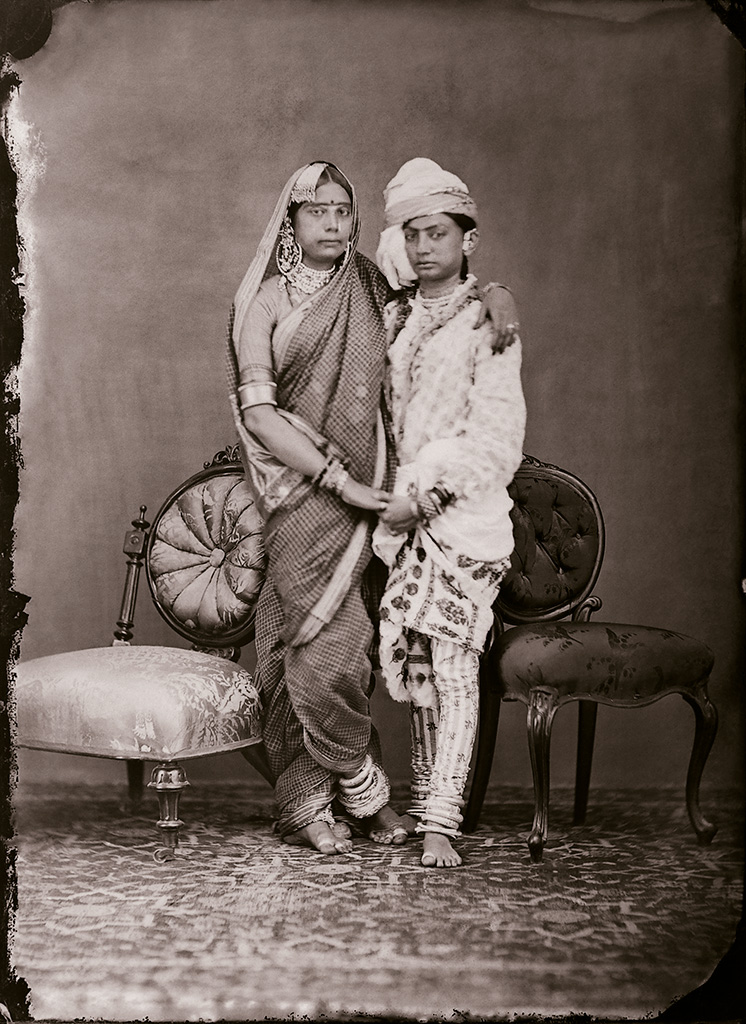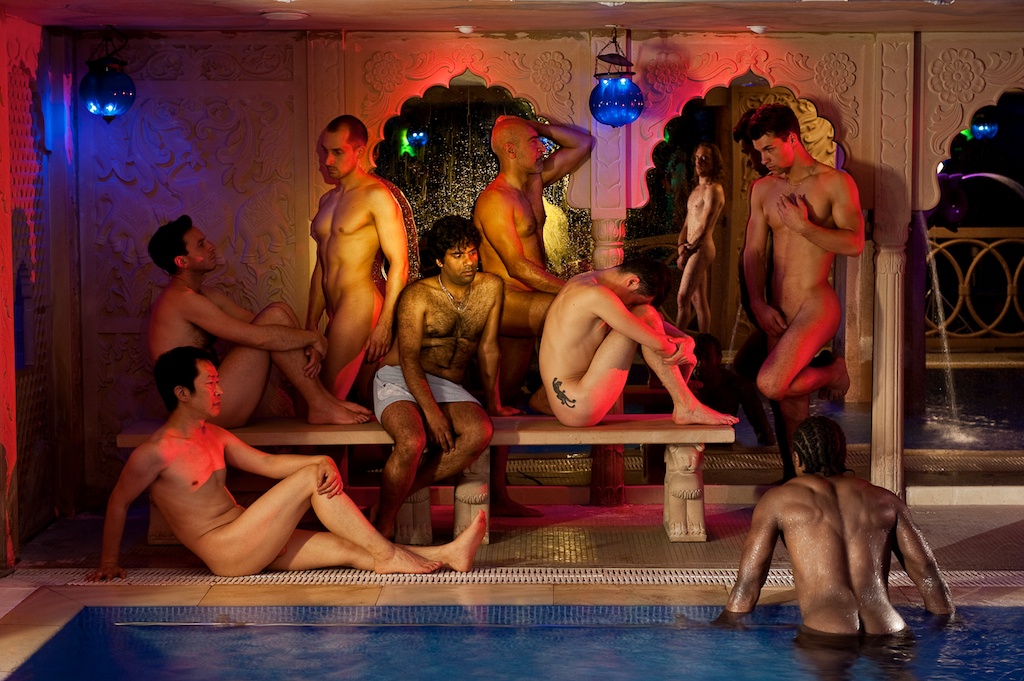
Indian photography – a history of the performative

Umrao Singh Sher-Gil, Sisters in bed, c. 1932, Courtesy of PHOTOINK
Back in the 19th century, artists in cities like Bombay, Calcutta and Madras were instrumental in the rapid expansion of an emerging, recently invented medium – photography. Ever since, India has been home to a strong tradition of photography, a form which has enabled an often subversive brand of ‘performativity’ and re-representation.

Naveen Kishore, Performing the Goddess – The Chapal Bhaduri Story, 1999
The Bengal Photographic Society was established in Calcutta in 1856. One of its members was Ram Singh II, the Maharaja of Jaipur – whose fondness and skill for the art form led him to later be known as the “Photographer Prince”. The camera captured Ram Singh’s imagination and he ended up not just amassing a formidable collection of photographs but also producing a body of ground-breaking work himself.
A series of portraits by Ram Singh feature in an exhibition opening this week at the Vancouver Art Gallery, which charts several generations of Indian photographers who have used the medium to reconstruct reality in areas like gender, religion and sexual identity.

Maharaja Sawai Ram Singh II, Self-portrait as a Shiva bhakt, c. 1870, Maharaja Sawai Man Singh II Museum Trust

Maharaja Sawai Ram Singh II, Unidentified women of the zenana, c. 1870, courtesy of Maharaja Sawai Man Singh II Museum Trust
Another important historial figure in Indian photography is Umrao Singh Sher-Gil, who is recognised as one of the pioneers in what we understand today as self-portraiture. Both he and his grandson, Vivan Sundaram, feature in the exhibition, alongside a wide range of other contemporary artists.

Pushpamala N, Sunhere Sapne, 1998, courtesy of Shumita and Arani Bose Collection

Pushpamala N, Sunhere Sapne, 1998, courtesy of Shumita and Arani Bose Collection
The photo series Sunhere Sapne (Golden Dreams) by Pushpamala N presents an ironic look at the post-independence Indian family, by staging herself as both a stereotypical middle-class housewife and her fantasy alter-ego, a wealthy socialite.

Naveen Kishore, Performing the Goddess – The Chapal Bhaduri Story, 1999
Naveen Kishore’s works depicts the tradition of male actors dressing as female goddesses in Bengali folk theatre; while the stylised images of Sunil Gupta’s Sun City series document the life of gay men in the saunas of Paris. Other photographers on display in the exhibition include Tejal Shah, Gauri Gill and Nikhil Chopra.

Sunil Gupta, Sun City, 2011, courtesy of Stephen Bulger Gallery





